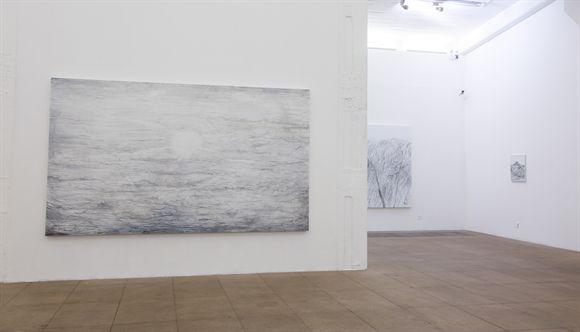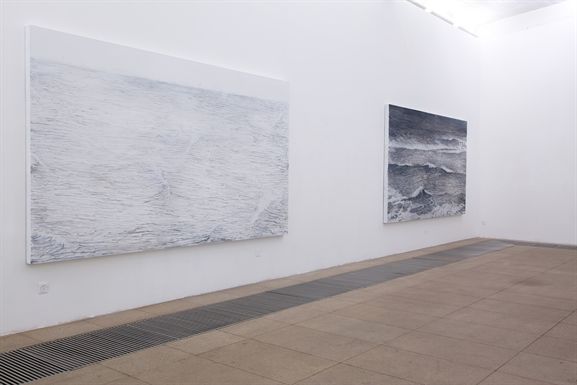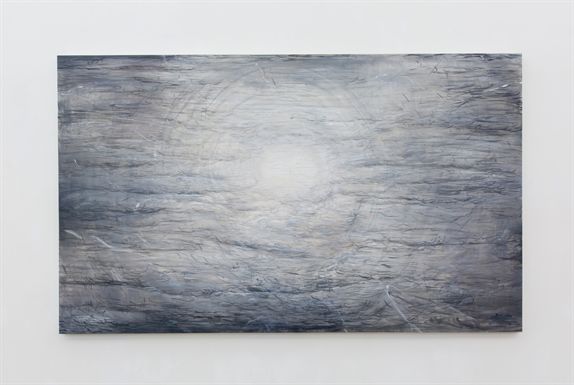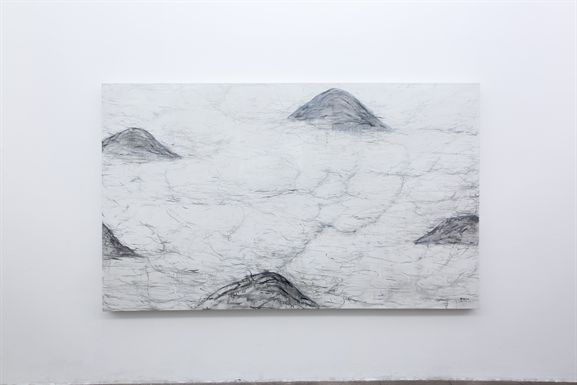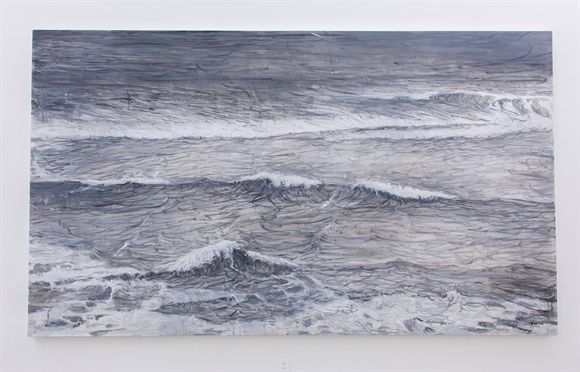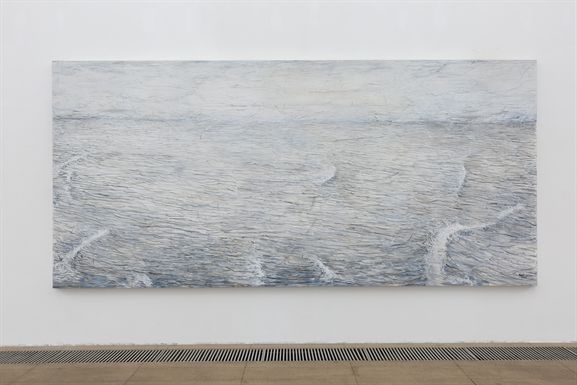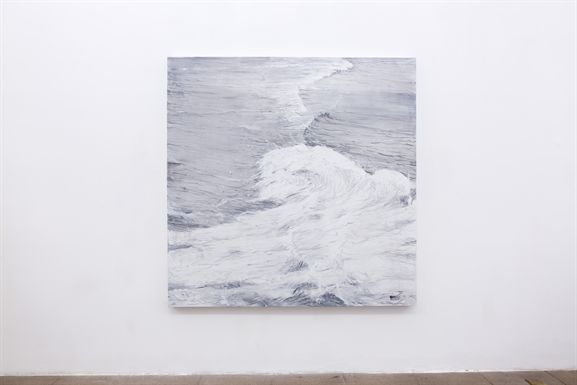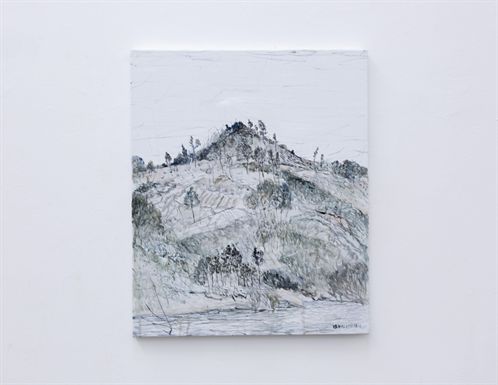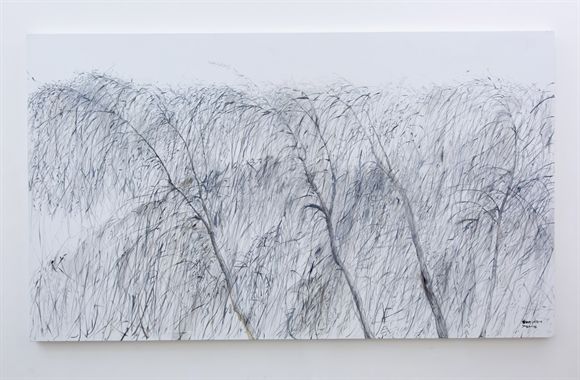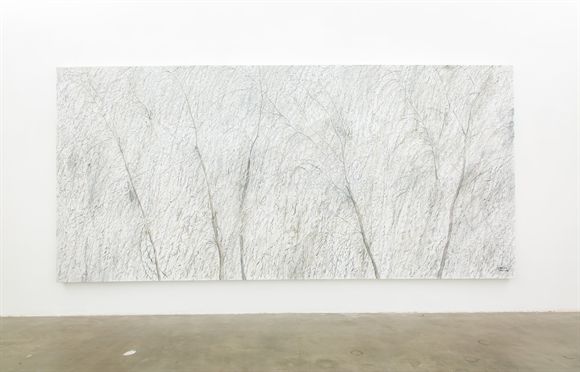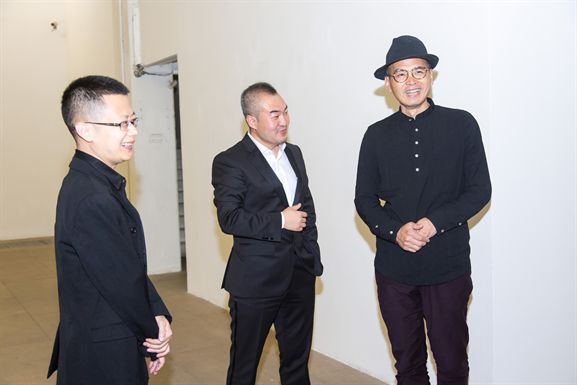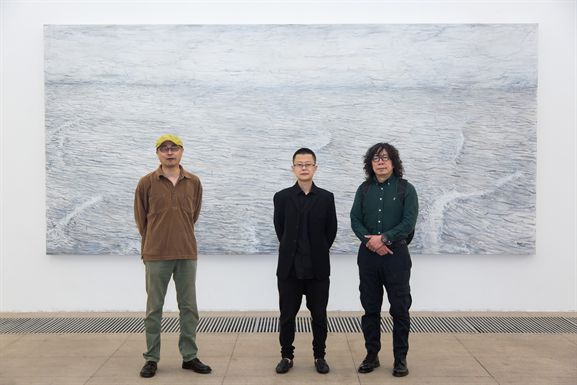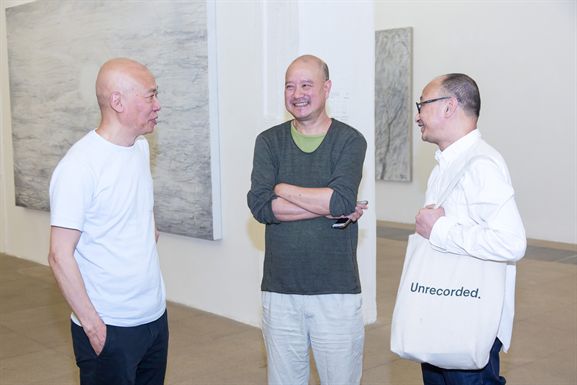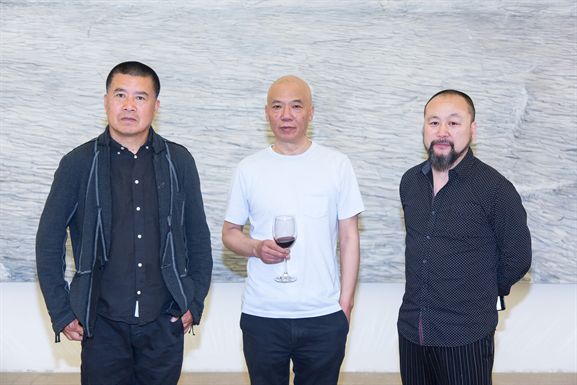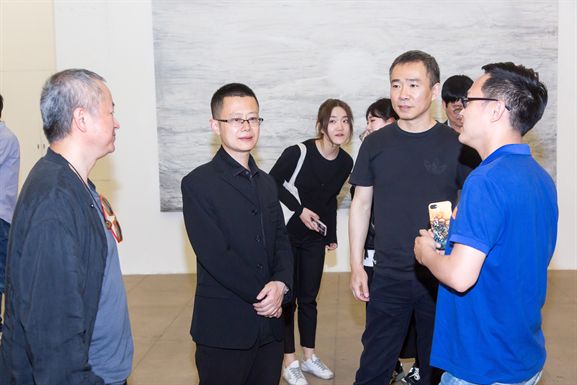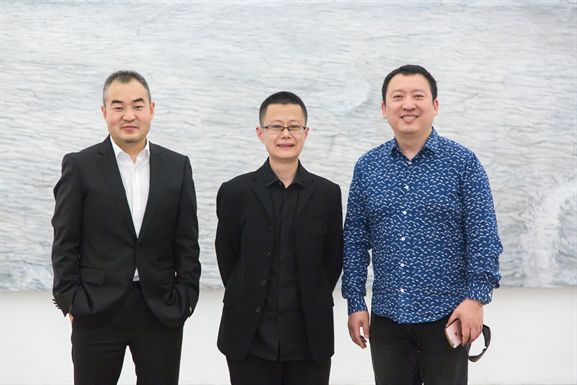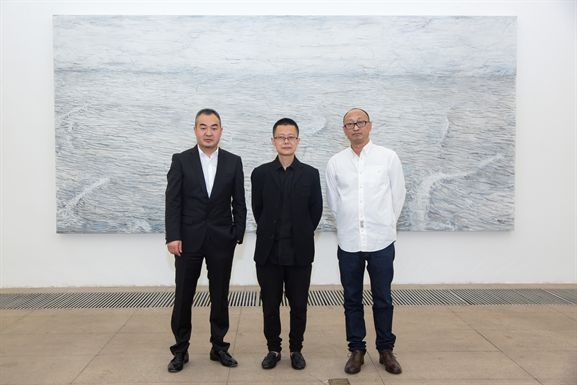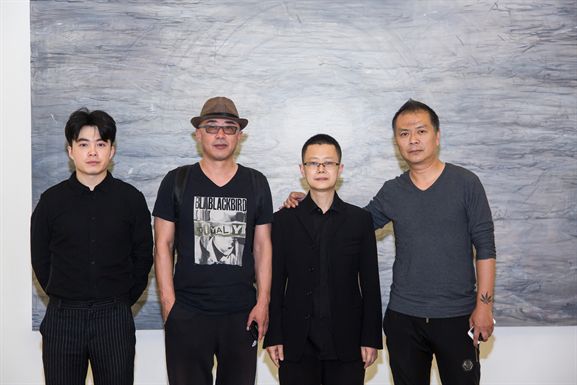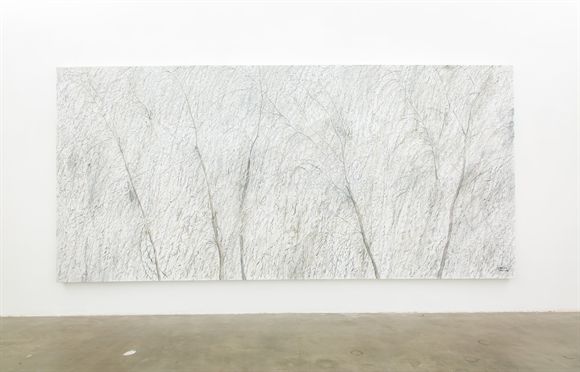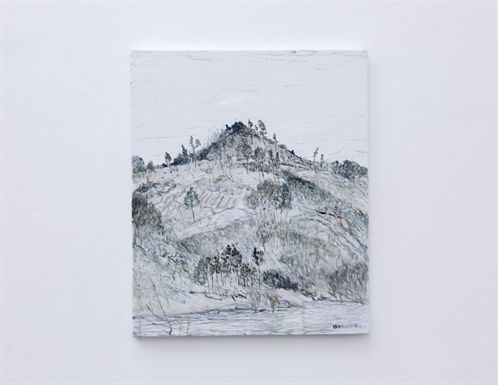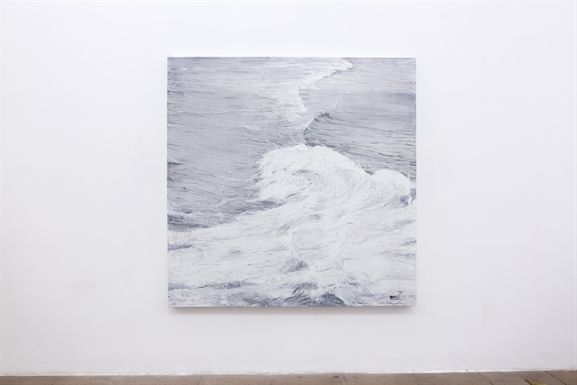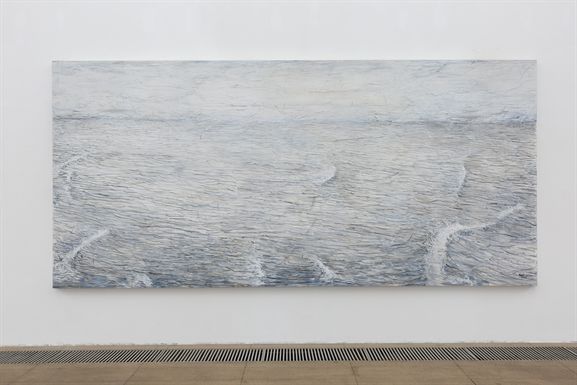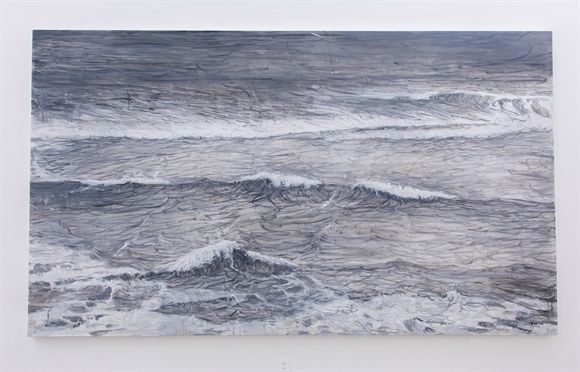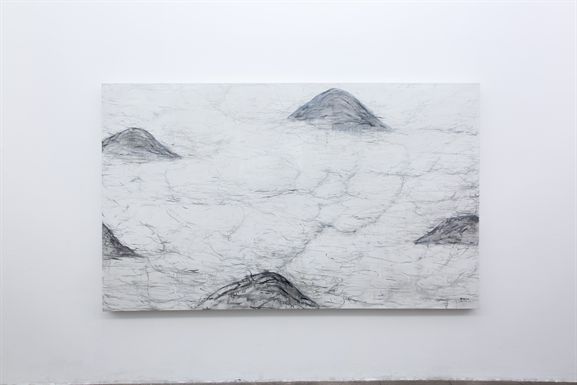Apr 28 - May 22, 2018
Press Release
Sponsored by the Whitebox Art Center, planed by FengBoyi', "Touch the Possible Shape -- Exhibition of Yang jinsong's Paintings(2016-2018)" will be held at the Whitebox Art Center from April 28 to May 22, 2018. The 15 paintings show the latest exploration and appearance of Yang jinsong's painting creation in the past two years.
Yang jinsong's new paintings, using traditional Chinese cultural resources, has a fresh sense of language and context through the visual images of solar eclipse, clouds, water and trees, as well as the continuous purification of the painting language, practicing the Oriental feelings embodied in the artisticidea and mood. He deliberately created a effect of unifying of water and sky or the entanglement of willows and leaves, showing a gray, but the brush strokes and lines follow the rules of the traditional Chinese calligraphy. In fact, they hidden his sad complex and sigh of life, and resist a kind of real nihility. At the same time, we can also see the state of his open and free creation, which closes the gap created by many jumps, mixing the structures of different natural scenes into one. It shows that his painting has stepped out of the pursuit of "expressiveness", in a non-specific abstract relationship, highlighted a kind of "unstable" function, a kind of unmanageable change.
Yang Jinsong's uncertainty of this natural attribute is not a form, but a gradual change in the way of painting language caused by his experience and feeling of life. Perhaps for Yang Jinsong, the cultural memory that cannot be transformed into a natural form is invalid, but his transformation itself changes the copies of the natural landscape. So, this is not so much a natural landscape created by Yang Jinsong, but rather a self-looking of his own memories and emotions, that can be referred to as the context of freedom and self-sufficiency. Investigating his painting process under this background, we can find out that Yang Jinsong's vision of creation is from the early direct realistic concern to the personal perception and awareness. Therefore, Yang Jinsong is one of the artists who do not fit into the popular art model. Or it could be said that Yang Jinsong's new works, as a case study of contemporary art ecology in China, provide a reference of visual samples for the contemporary transformation of painting.
Curator Article
The effect of Chinese traditional calligraphy and painting in my oil painting creation
Beyond everyday life --- my thoughts on Chinese painting art
By Feng Boyi
In the modern history of China, there area phenomenon of "against the tradition and following the tradition". The so-called "against the tradition and following the tradition" refers to that at the beginning of China’smodernization, some revolutionary scholars devoted themselves to introducingWestern academic thoughts and scientific conceptssystematically, actively involving in the reality, to transform the society as their own responsibility, with hardships and no end.But as theyexperienced more in the changing world, these scholars, such as Wang Guowei,Yan Fu,Chen Duxiu, Gu Hongming and so on, often turned to the study of traditional Chinese culture with disappointment. Of course, as far as they are concerned, this is only a transformation of their own revolutionary careers, but it is a cultural phenomenon worth ofthinking, in the light of the times. And in the art world, "against the tradition and following the tradition" is not limited to one person or one thing.But the word "tradition"here includes two situations.The first is that after the normalization of style, it is easy to repeat in the built-in mode, away from the critical and exploratory character of modern art, or gotten drunk in the so-called "traditional culture", toward the mystery and even the mire of metaphysics. The second is to emphasize the hidden and complex existence of human nature and the situation of individual life in reality, and to pay attention to the purification, promotion and enrichment of the visual language of individual art.This is not only a reflection of the contradictions caused by social changes in the artist's artistic working, but also the result ofhis personal temperament, experience and his situation of time and space. It seems to me that Yang Jinsongbelongs or is going to be one of these artists. One side of his former painting art is fragmented, even bizarre, deformed to show the visual appearance of kinship; the other side of his works is full of expressiveness, with a direct relationship to the reality. His paintings, such as "fish series", is more a representation and metaphor of China's real landscape, hiding the projection of social unrest in his personal spiritual and psychological aspects.His new works painted after2016 shows an sort of returning, diving back and forth. "It's a dilemma reducing gradually the narrative character of the picture and distancingmyself from previous thematic paintings, but at the same time limitingmyself to the tangible picture," he said so. “I should gradually weaken the narrative of the picture and make distance from my earlier thematic nature, and keep it within the boundary of figurative at the same time, which is a dilemma. Drawing away the narrative nature from the painting will make the concept of works hard to be constructed. But an infatuation with rhythm and tension of points and lines at the same time will lead me to the circle of abstract expressionism. My works should convey an empty state of anatta and non-me.”The dissociation and returning in the creative process, is not simply to seek paradise, which is a cheap contemporary expression ofescapingfrom too much noise of the reality. Instead, trying to make use of the traditional Chinese cultural resources and through the visual form and language of solar eclipse, cloudatlas, shape of water and words of trees,the artist pays attention to the cognition and awareness of personal meditation, and deepenshis painting language, as well as reflecting the Eastern feelings with idea and mood and getting a different fresh sense of language. It shows that his painting has stepped out of the pursuit of "expressiveness" and highlighted a kind of "unstable" functionin a non-specific abstract relationship and a kind of change hard to grasp. This "uncertainty" isby no means a form for Yang Jinsong, but his concrete and subtle daily experience of survival and his inner feelings.
Yang Jinsong's new works all starts from a brush of graycolor. He createsintentionally a picture effect: water and sky integrated, willows and leaves tangled. It appears to be a gray without end, but the brush strokes and lines have the rhythmof traditional Chinese calligraphy, hidinghis complex of sadness and sigh of life, and resisting a real nothingness. Although he captures the appearance of the natural scene, which is the main background of his work, he refuses to reproduce the metaphysical landscape. Hispersonal experience permeates symbolically the natural landscape, leading to the scene that he painted, forming the context in which he can refer to freedom and self-sufficiency.At the same time, we can also see his open and free state of creation. This freestretch can fill many gaps created byjumps, mixing the structures of different natural scenes into one whole. He said, Tangible and intangible, image and without image, all of these interweave in the process of painting. I sometimes forget "images" in the impact of brush strokes and search for the beauty of "neutralization". Sometimes my idea rises, and then dissipates. I’m looking for balance between extreme complexity and extreme simplicity. The images in the picture discrete and integrate again and again. I experience the emptiness statement of myself when I’m painting. Finally I stop painting and finish the picture, which needs courage.Perhaps for Yang Jinsong,the cultural memory that cannot be translated into natural things is invalid. But this transformation itself changes the natural landscape. Therefore, this is not so much Yang Jinsong's creation of visual images, but rather a self-viewfor his own memory and the existence of hisemotion. Moreover, the visual rhetoric of Yang Jinsong’s new paintings is far from being confined to the subject matter of the works itself. It has alreadyextendedto the question of contemporary Chinese painting seeking new possibilities to construct contemporary values in the context of cultural globalization, especially to the question of the modern transformation of the painting art in China, and even to the question of innovations and boundaries.At the moment, it seems that the expression of art is starting to reach a certain level of "purity", which can become a quiet field in which we can explore. Because "for the life" as the original heavy mission of art has been quietly dispelled.Pure art seems to have developed its own independent objective basis, and art is also more and more truly returning to "itself." Of course this is not to say that art has a "self" isolated from the world. That means that our imaginations and requirements for art have changed in many ways, and this change is precisely the new form of art change with times. Art has gradually become a high-level, marginal human language.From this point of view, Yang Jinsong not only inherited the traditional Chinese culture, but also extended the humane care since the social transformation. He said that his purpose is "rewriting of the traditional subject matter, drawing out the image elementsfrom its language, reproducing the spiritual temperament of the traditional painting, finding the general sense of visual elements and using the technique of fragment amplification to re-create.”However, the sensitivity to the contemporary cultural situation leads Yang Jinsong to change his old methods of artistic creation. What the artist needs is to embody this conceptual thinking and practice in a way and a language that is prescribed as "art". Therefore, under this background, we can examine and find out that his visual field is introverted gradually into his personal inner experience from direct concerning realty.
Yang Jinsongkeeps a low profile with a quiet personality. He does not want to be involved in the "party of reality", but seeks the purity of heart in our "world”, willing to followthe heart, as well as to obey the rule of the nature, and that is all. Never floating with the stream, he thinks alone, and always stays in his artistic garden,even with a little feeling and interestof anivory tower.This also makes an annotation to his distancefrom the art world. Especially aswe look at his new paintings, we can find the realm concerning human nature in everyday plain scenes, without the grand narrative stories. The art he isseeking for,is freefrom external constraints with an independent thinking,which is refined, mild and quiet, long time, without popular variegated colors, andthrough which we can see the other side of the integrity of literati in time and reality. Compared with the ejectingworksof avant-garde art, Yang Jinsong’s paintings are dilute and peaceful, and far away from the so-called "enterprise artist". His new works seem to have no trace of the current popular language, which follow the tradition of “forart" from the May 4th Movement, as the result of thinking for art itself. This kind of language seems a kind of alternative, but it can purifyour mind and impact us on reason. In front of his paintings, the fashionable colors appearbeing tasteless, even though they areonly in black and white and grey. He said, "Images sometimes come out slowly, and at the end I actually forget that there is a process of self-growth for painting, as if my mind has experienced life and death several times in a moment.”Still, as long as we see his confident and steady eyes, everything to him, and to his workingswill be clear inour minds. The spirit of self-sufficiency in traditional Chinese culture, the positive moral practice of Confucianism and the philosophy of avoidance of the Taoism have been cleverly combined to form a middle course of his self-preservation, providing us the resources of thought in art and in spiritual meditation, and givingus constantly the possibilities for thinking and judgement. We can say thata person who is "into the world" too much is dwelled in the reality and wouldlosehimself.If a person is based on his own personal experience,and is"out of the world", being faithful to oneself, hecan find the existence of “original self”.
Installation View
Artworks
- Willow No 3 Oil on Canvas 96 x 232cm 2016
Media Report




